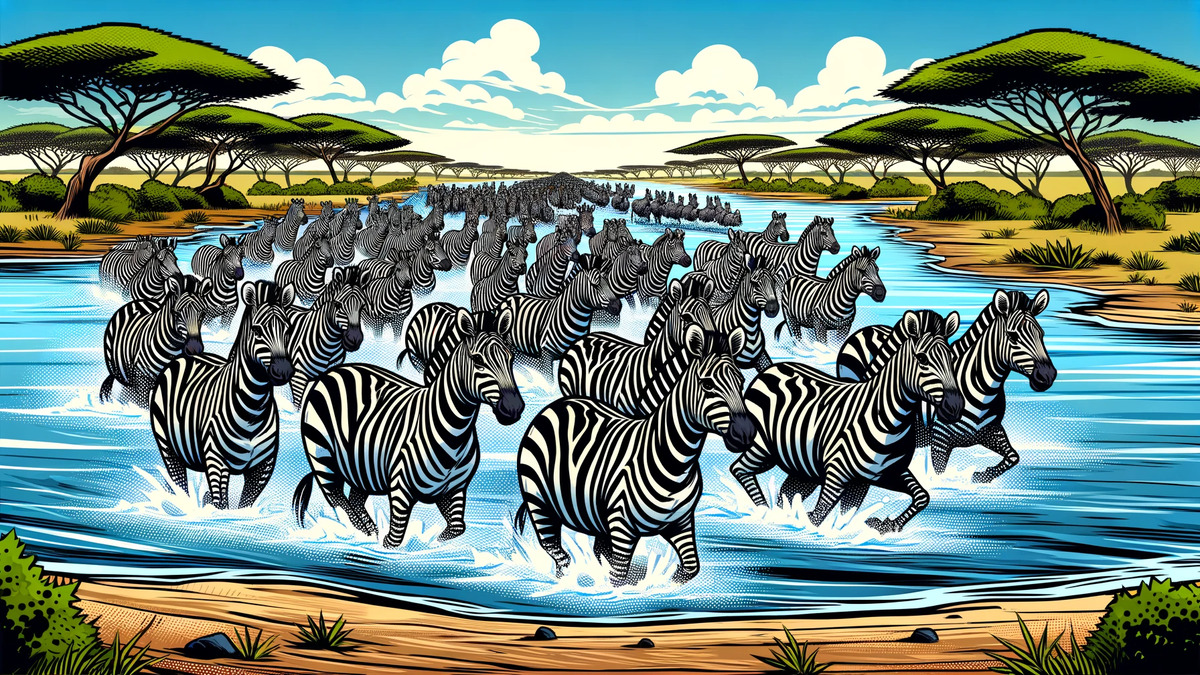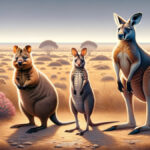The iconic black and white striped horse, the zebra. They are, of course, one of the best-known herbivores of the African savannah.
First of all, it is important to mention that although zebras have many different stripes, in fact, when you shave their hair, the ground is all black.
Why can’t we ride zebras? Let’s look at zebra racing
You may have seen people riding horses and donkeys, but you have never seen them riding zebras. That is because horses and donkeys are generally gentle and docile, while zebras simply have a different character. There have been cases of domestication, but it is indeed difficult to ride them.
This video will give you an idea.
If you were to enter a race in which you had to ride either a zebra or an ostrich, you would immediately know that you should choose the ostrich.
But then there is David Livingstone, the famous Scottish explorer whose name is in world history textbooks, who used a zebra chariot during his adventures in Africa. Despite being difficult to handle, zebras were apparently valued because of their valuable traits, which made them resistant to diseases that horses often suffer from. Trade-off.
Significant significance of zebra stripes
Stripes are thought to have multiple roles, including camouflage. They are thought to perform a variety of functions, including camouflage and thermoregulation.
Perhaps the most interesting of these claims is that they act as a deterrent against biting insects such as tsetse flies and mosquitoes. Specifically, both tsetse flies and mosquitoes transmit diseases. The tsetse fly is a particularly important threat to them, but experiments have confirmed that they do not come to the black and white stripes, so it is reasonable to assume that they evolved to protect themselves from this fly.
And one more thing about stripes. In nature, zebra stripes can create a dazzling and confusing display called motion dazzle when a herd is fleeing predators. As the zebra’s main predators, lions and hyenas, have poor colour vision, the black and white stripes can make them look like shades of grey blending into the grass, making them difficult to see.
Slow but fast zebras. Hobbies include gardening
Despite their gentle appearance, zebras are relatively aggressive. Rather, their savannah roommates are cheetahs and lions. This means that they have a fierce defensive behaviour that is unyielding to them. Running away is of course fundamental, but they also use their powerful teeth and hooves to fight off predators.
Zebras are very quick and can run up to 65 km/h when threatened.
Quick does not just mean fast. When they sense danger, they do not run in a straight line, but in a unique zigzag pattern.
In the famous anime Initial D, an old car, a Toyota 86, overtakes a 4WD, high power, straight line speed car in a quick curve. In the same way, zebras are sometimes faster than cheetahs and lions, which are faster at absolute speed. They are the sprinter-treno of the wild.
Zebras are also known for their endurance, allowing them to travel long distances in search of food and water.
Each has a unique stripe pattern, like a human fingerprint. Some scientists believe they can recognise each other by their stripes.
They are social animals and live in family groups called harems, consisting of one stallion, several mares and their offspring. With regard to communication, zebras use a variety of vocalisations, including barking, whinnying, snorting and squealing, as well as visual expressions.
In stable family groups, one stallion usually mates with several females. Some species, such as Grevy’s zebra, have a less stable social structure, with the stallion establishing a territory and mating with any female that enters the area.
Their diet consists mainly of grass, but when grass is scarce they also eat shrubs, herbs, twigs, leaves and bark. When grass is scarce, they also eat shrubs, herbs, twigs, leaves and bark. And this is possible because zebras have digestive systems that can process low-quality forage more efficiently than other herbivores.
This is also true of horses, but zebras have eyes on both sides of their heads, giving them an almost panoramic field of vision that helps them spot predators. They also have excellent hearing, with large, rounded ears that can pick up sounds from different directions.
An unusual habit is for two zebras to stand side by side and nibble at each other’s neck and back hairs.
Sleeping patterns are also unique; they sleep standing up. In the wild, they live like an army, with one member of the group usually awake and watching for predators while the others sleep.
Role in the ecosystem. As excellent herbivores, zebras play an important role in the savannah, where they shape the landscape by keeping grass short.
Predators such as lions, hyenas and cheetahs are their main rivals. They also compete with other herbivores such as gnus and antelope for grazing resources.
Types of zebras Quite different if you look closely
There is no single type of zebra. There are three species of zebras: the Plains zebra, which is the most common, the Grevy’s zebra, which is slightly to the north, and the Mountain zebra, which is slightly to the south. They differ in their physical characteristics and behaviour. If you look closely, you can see that the stripes flow very differently.
Each has a slightly different pattern, with Grevy’s zebra having the narrowest stripes. The size of each species varies, with Grevy’s zebras being the largest. Mountain zebras have a droopy throat.
This is the familiar zebra. The other two have pure white bellies, although they also have a pattern on their bellies.
Do you think their eyes are a bit flashing? This is a gravy zebra with thin lines.
You can see their droopy throats. The mountain zebra also has a much larger pattern of lines on its hips.
Zebra habitat and range
The breeding and gestation periods also vary between zebra species, but a foal is usually born after a gestation period of about one year. The foal can stand and walk and can nurse shortly after birth. These are also essential adaptations for survival in the savannah.
Zebras are found in several African countries, with the largest populations in Tanzania, Botswana and Kenya. More simply put, it is the savannah region of Africa from the equatorial zone to the south. Zebras are therefore present in countries such as the Congo, which has a lot of tropical rainforest, but they are much less common.
Just as rhinos were driven to extinction for their horns, zebras have been hunted for their skins and lost their habitat to agriculture. The range of the gravy zebra and mountain zebra is rather small. Conservation continues.
The zoo with the largest population of zebras is the San Diego Zoo in the USA, which is known for its extensive collection of animals from around the world. Here, they are kept in an environment that mimics the zebra’s natural habitat as closely as possible, providing visitors with the opportunity to learn about these magnificent creatures and the importance of their conservation.
In a controlled environment such as a zoo, zebras can live for as long as 40 years. Because they are isolated from predators and disease, they live longer than zebras in the wild, with an average lifespan of around 30 years.



コメント